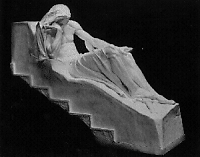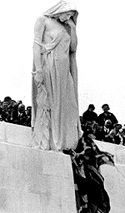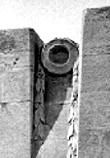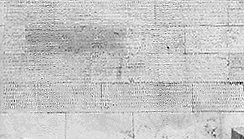Design and Construction
Photo Galleries
The ground on which the Vimy Monument sits, as well as the surrounding 100 hectares of land, were given to Canada by France in 1922 in gratitude for sacrifices made by Canada in the First World War and for the victory achieved by Canadian troops in capturing Vimy Ridge in April 1917 1. This monument was built by the people of Canada as a tribute to their countrymen who fought in the Great War and, particularly, to the more than 66,000 men who gave their lives 2.

Walter Allward
The monument was designed by Canadian architect and sculptor, the late Walter Seymour Allward. His design was selected from 160 others submitted by Canadians who participated in a competition held in the early 1920s. Work began on the monument in 1925 and eleven years later, on July 26, 1936 it was unveiled by King Edward VIII. It cost approximately $1.5 million, including site preparation and the building of roads. The story of its construction is an interesting one.
Built into the side of the hill at the highest point of the Ridge, the monument rests on a bed of about 15,000 tonnes of concrete, reinforced with hundreds of tonnes of steel. The excavation had to be done with great care as the ground was littered with live bombs and shells. Many of these were unearthed as digging proceeded. The deepest part of the foundation is under the monument's eastward facing front walls, where it goes down 13 metres.

Statue of Peace
The base and twin pylons contain almost 6,000 tonnes of a special type of extremely durable limestone brought to the site from Yugoslavia (present day Croatia). The 20 sculptured figures which grace the monument were actually carved where they now stand from huge blocks of this stone. The carvers used half-size plaster models produced by Walter Allward and an instrument called a pantograph to reproduce the huge figures to the proper scale. Finishing touches were then added by a master carver.
All this work was carried out inside temporary studios built around each figure, including those at the top of the pylons. The pylons tower 27 metres above the base of the monument. Because of the height of the Ridge, the topmost figure - that of peace - is approximately 110 metres above the Douai Plain to the east.
Walter Allward once said that his inspiration for the monument came to him in a dream. The two pylons represent Canada and France - two nations beset by war and united to fight for a common goal - peace and freedom for the Allied nations. To some, the pylons may seem like twin sentinels, silently guarding a peaceful world. Or they may be seen as a gateway to a better world where peace prevails.

Female Mourner

Male Mourner
There is a wealth of symbolism in its sculptures which help the viewer in contemplating the structure as a whole. One theme is that of the strength of the ideals shared by Canada, France, and Britain which gives its true strength to the bulwark of defence represented by the massive base of the monument. Another is the sorrow of a young nation at the sacrifice of so much of her youth. Yet a third is a prayer for peace. Some of the sculptures are mourners. As you approach the monument, you will have passed by two such figures reclining on either side of the steps - a woman on the left, a man on the right.

Weeping Woman

Statue of Justice
As you walk to the front of the monument, you will see one of its central figures - a woman, cloaked and hooded, facing eastward toward the new day. Her eyes are cast down and her chin is resting on her hand. Below her is a tomb, draped in laurel branches and bearing a helmet. This saddened figure represents Canada - a young nation mourning her fallen sons. This figure was carved from a single, 30-tonne block of stone - the largest piece in the monument.
Turning from this figure to look up at the pylons, you will see at the highest points, Justice and Peace. Arranged below them are other figures representing Truth, Knowledge, Gallantry and Sympathy. Around these figures are shields of Canada, Britain and France. On the outside of the pylons is the Cross. In the centre, at the base, the Spirit of Sacrifice throws the torch to his comrades.
Beside the steps leading down on each side of the front walls are two groups of carved figures. These are the Defenders. Facing the Memorial, at the bottom of the stairs on your left, is the Breaking of the Sword and, on your right, Sympathy for the Helpless. Above each group are cannons, silent now and draped in laurel and olive branches - symbols of Victory and Peace.

Cannons

Names on Monument
On the outside of the monument's enclosing walls you will find the names of 11,285 Canadians who were killed in France and whose final resting places are unknown. The First World War battle honours of the regiments that fought at Vimy Ridge and dedicatory inscriptions are carved on the face of the pylons.
As you stand on the monument's wide stone terrace and look out over the broad fields and rolling hills of France, you can see other places where Canadians fought and died. More than 7,000 are buried in 30 war cemeteries within a 16-kilometre radius of this spot.
The First World War was referred to as "the war to end all wars". Sadly, during the half century that this monument has been standing, many wars have ravaged our world. Today, the memorial serves to remind us of the high price of war. It should also inspire us to work toward that lasting peace for which those commemorated here gave their lives.
- Date modified: